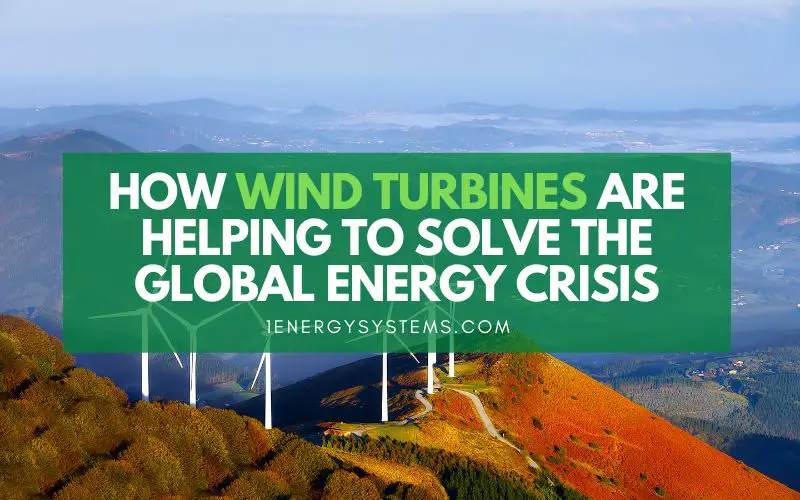The world is facing an unprecedented challenge: how to meet the growing demand for electricity while reducing greenhouse gas emissions and avoiding the worst impacts of climate change.
Fossil fuels, which currently supply most of our power, are depleting our natural resources, polluting our air and water, and contributing to global warming. Fortunately, there are better options.
Today, wind power is the most affordable option for new power generation sources that do not emit CO2. It is a proven and reliable energy resource.
In this article, we will explore how wind turbines work, their benefits, and their challenges in becoming a major part of the global energy mix.
How do wind turbines work?
Wind turbines convert the kinetic energy of moving air into mechanical energy, which can then be used to generate electricity. Wind turbines consist of three main components:
- A rotor, which has blades that spin when the wind blows.
- A generator, which converts the mechanical energy into electrical energy.
- A tower, which supports the rotor and the generator.
The electricity produced by wind turbines can be fed into the grid or used locally.
Wind turbines can vary in size, design, and location.
Some are small enough to power a single home or business, while others are large enough to form part of a wind farm that can supply electricity to thousands of households.
Some are installed on land, while others are offshore, with stronger and more consistent wind. Some have horizontal-axis rotors, which are more common and efficient, while others have vertical-axis rotors, which are more suitable for urban areas.
What benefits do wind turbines offer?
Wind power has many advantages over fossil fuels and other sources of electricity. Here are some of them:
Wind power is clean and renewable:
Compared to fossil fuels, wind power is a cleaner and renewable energy source that does not release any harmful pollutants or greenhouse gases, leading to global warming.
Wind power also does not deplete any finite resources or create waste that must be disposed of. Wind power is a sustainable source of energy that can last indefinitely as long as the wind blows.
Wind power is cost-effective and competitive:
According to the International Energy Agency (IEA), wind power is the cheapest source of new electricity generation in many regions of the world.
The cost of wind power has declined significantly over the years due to technological improvements, economies of scale, and policy support.
Wind power also has lower operating and maintenance costs than fossil fuels and nuclear power.
Wind power is flexible and diverse:
Wind power can be deployed in various locations and scales to suit different needs and preferences.
Wind power can also complement other sources of electricity by providing peak demand or balancing supply and demand fluctuations.
Wind power can also create local jobs and income for communities that host wind farms or manufacture wind turbines.
What challenges do wind turbines face?
Despite its many benefits, wind power also faces some challenges that need to be addressed to increase its share in the global energy mix. Here are some of them:
Wind power is variable and intermittent:
Unlike fossil fuels or nuclear power, wind power depends on the availability and strength of the wind, which can change from hour to hour or day to day.
This means that wind power cannot provide a constant or reliable supply of electricity unless backed up by other sources or stored in batteries or other devices.
Wind power is subject to environmental and social impacts:
Although wind power is much cleaner than fossil fuels, it still negatively affects the environment and society.
For example, wind turbines can cause noise pollution, visual impact, bird and bat mortality, land use conflicts, and grid integration issues.
These impacts must be minimized or mitigated through careful planning, design, regulation, and stakeholder consultation.
Wind power is constrained by policy and market barriers:
Although wind power has received significant support from governments and consumers worldwide, it still faces some obstacles in terms of policy uncertainty, regulatory complexity, public acceptance, financing availability, grid access, and market competition.
These barriers must be overcome or removed through coordinated action from policymakers, industry players, civil society groups, and consumers.
Conclusion
Wind power is a vital climate solution that can help us solve the global energy crisis with clean, affordable, flexible, and diverse electricity generation.
However, wind power also faces some challenges that must be addressed to realize its full potential and contribution to the global energy transition.
By working together to overcome these challenges, we can harness the power of the wind to create a better future for ourselves and our planet.

